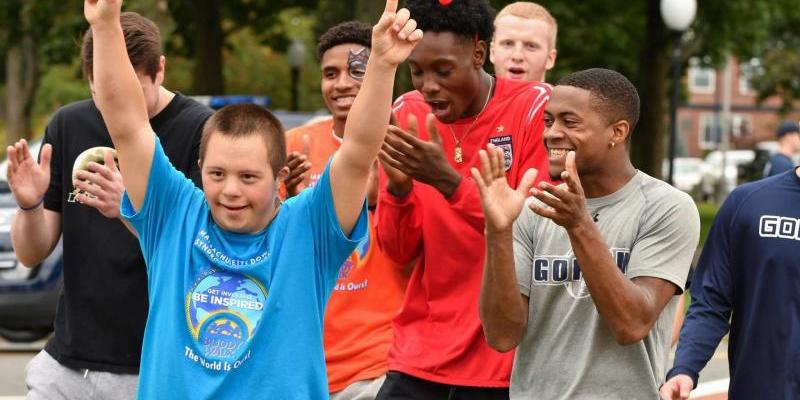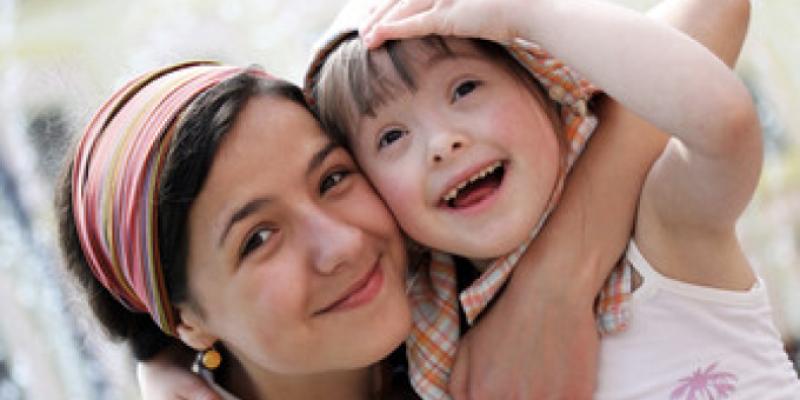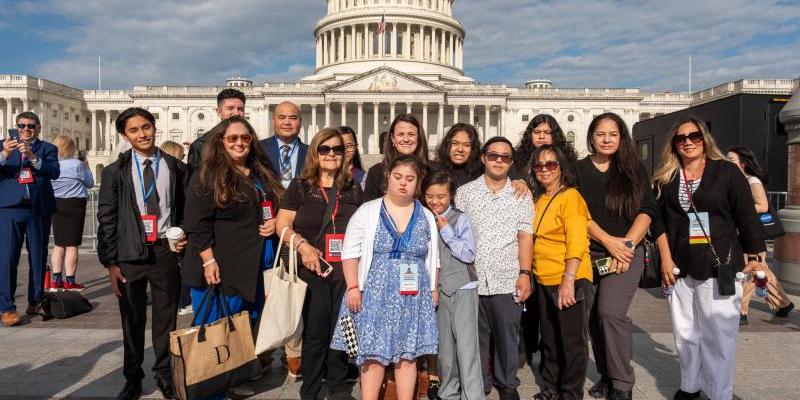
Down syndrome occurs when an individual has a full or partial extra copy of chromosome 21. This additional genetic material alters the course of development and causes the characteristics associated with Down syndrome.
- There are three types of Down syndrome: trisomy 21 (nondisjunction) accounts for 95% of cases, translocation accounts for about 3%, and mosaicism accounts for about 2%.
- Approximately one in every 640 babies in the United States is born with Down syndrome, making Down syndrome the most common chromosomal condition. About 5,700 babies with Down syndrome are born in the United States each year.
- Down syndrome occurs in people of all races and economic levels.
- The incidence of births of children with Down syndrome increases with the age of the mother. But due to higher fertility rates in younger women, 51% of children with Down syndrome are born to women under 35 years of age.
- People with Down syndrome have an increased risk for certain medical conditions such as congenital heart defects, respiratory and hearing problems, Alzheimer’s disease, childhood leukemia, and thyroid conditions. Many of these conditions are now treatable, so most people with Down syndrome lead healthy lives.
- A few of the common physical traits of Down syndrome are low muscle tone, small stature, an upward slant to the eyes, and a single deep crease across the center of the palm. Every person with Down syndrome is a unique individual and may possess these characteristics to different degrees or not at all.
- Life expectancy for people with Down syndrome has increased dramatically in recent decades – from 25 in 1983 to 60 today.
- People with Down syndrome attend school, work, participate in decisions that affect them, have meaningful relationships, vote, and contribute to society in many wonderful ways.
- All people with Down syndrome experience cognitive delays, but the effect is usually mild to moderate and is not indicative of the many strengths and talents that each individual possesses.
- Quality educational programs, a stimulating home environment, good health care, and positive support from family, friends, and the community enable people with Down syndrome to lead fulfilling and productive lives.
These downloadable Fact Sheets are available to print and distribute:
Myths & Truths
MYTH: Down syndrome is a rare disorder.
TRUTH: Down syndrome is the most commonly occurring chromosomal condition. Approximately one in every 640 babies in the United States is born with Down syndrome, or around 5,700 births per year.
MYTH: Down syndrome is hereditary and runs in families.
TRUTH: Translocation, a type of Down syndrome that accounts for 3 to 4% of all cases, is the only type of Down syndrome known to have a hereditary component. Of those, one third (or 1% of all cases of Down syndrome) are hereditary.
MYTH: Most children with Down syndrome are born to older parents.
TRUTH: Most children with Down syndrome are born to women younger than 35 years old simply because younger women have more children. However, the likelihood of having a child with Down syndrome increases with the age of the mother, especially after age 35.
MYTH: Parents will not find community support in bringing up their child with Down syndrome.
TRUTH: In almost every community of the United States there are parent support groups and other community organizations directly involved in providing services to families of individuals with Down syndrome. You can find a list of groups at http://www.ndss.org/Resources/Local-Support.
MYTH: All people with Down syndrome have a severe cognitive disability.
TRUTH: Most people with Down syndrome have a mild to moderate cognitive disability, or intellectual disability. This is not indicative of the many strengths and talents that each individual possesses. Be considerate of the extra time it might take a person who has a disability to get things done or said.
MYTH: People with Down syndrome are always sick.
TRUTH: People with Down syndrome are at an increased risk for certain medical conditions such as congenital heart defects, respiratory, hearing problems, and thyroid conditions. Advances in health care and treatment of these conditions have allowed most individuals with Down syndrome to lead healthy lives.
MYTH: Scientists know everything there is to know about Down syndrome.
TRUTH: Though we know that an extra full or partial copy of chromosome 21 causes the characteristics of Down syndrome, researchers are making great strides in identifying how individual genes on chromosome 21 affect a person with Down syndrome. Scientists now feel strongly that it will be possible to improve, correct, or prevent many of the health problems associated with Down syndrome in the future.
MYTH: Segregated special education programs are the only option for students with Down syndrome.
TRUTH: Students with Down syndrome are included in typical academic classrooms in schools across the country. The current trend in education is for full inclusion in social and educational settings. Sometimes students with Down syndrome are included in specific courses, while in other situations students are fully included in the typical classroom for all subjects. Increasingly, individuals with Down syndrome graduate from high school with diplomas, and participate in postsecondary academic and college programs.
MYTH: People with Down syndrome cannot be active members of their community.
TRUTH: People with Down syndrome are active participants in educational, social and recreational activities. They are included in the typical education system and take part in sports, music, art programs and any other activities in the community. People with Down syndrome are valued members of their families and communities, and make meaningful contributions to society.
MYTH: People with Down syndrome are always happy.
TRUTH: People with Down syndrome have feelings just like anyone else. They experience the full range of emotions. They respond to positive expressions of friendship and are hurt and upset by inconsiderate behavior.
MYTH: Adults with Down syndrome are the same as children with Down syndrome.
TRUTH: Adults with Down syndrome are not children, and should not be considered children. They enjoy activities and companionship with other adults, and have similar needs and feelings as their typical peers.
MYTH: Adults with Down syndrome are unable to form close interpersonal relationships leading to marriage.
TRUTH: People with Down syndrome socialize and have meaningful friendships. Some choose to date, maintain ongoing relationships, and marry.
MYTH: Adults with Down syndrome are unemployable.
TRUTH: Businesses employ adults with Down syndrome for a variety of positions – in banks, corporations, hotels, hospitals, nursing homes, offices and restaurants. They work in the music and entertainment industry, in clerical positions, childcare, the sports field and the computer industry, to name a few. Like anybody else, people with Down syndrome want to have a job where their work will be valued.
MYTH: It is ok to use the “r-word” if you don’t really mean it.
TRUTH: It is never acceptable to use the word “retarded” in any derogatory context. Using this word is hurtful and suggests that people with disabilities are not competent.







